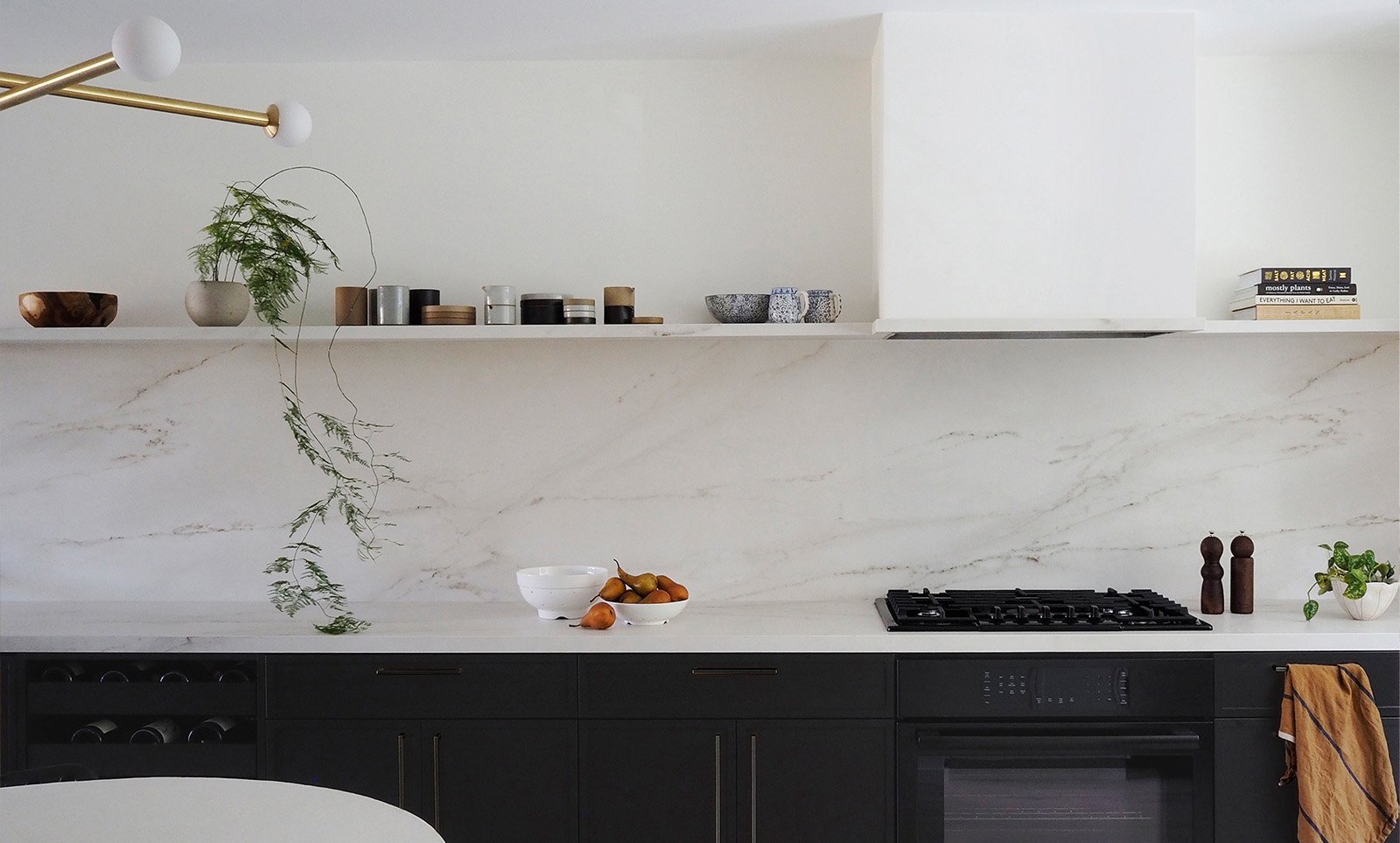ALL ABOUT TADELAKT
ALL ABOUT TADELAKT
Tadelakt has been steadily gaining popularity in the design world in recent years, but what exactly is this wall finish all about? While relatively unknown in the United States, tadelakt has been used in Moroccan architecture for centuries, and is perhaps most well-known for its presence in traditional hammam baths. This wall finish is favored now for its natural materials and organic look, and is most commonly used in showers or baths.
Made from limestone and olive soap, this durable material is simple to maintain and offers a luxurious, textured finish. Tadelakt is a perfect alternative to tiles in the bathroom, as it is naturally mildew and mold resistant, and its smooth application means no grout lines. We love that this material is free of VOCs (volatile organic compounds) and requires no special maintenance. Also, since the pH is very basic, insects are repelled by tadelakt.
Tadelakt range hood of our Mission Contemporary project.
Given its properties, tadelakt is a great choice for kitchen backsplashes as well as fireplace surrounds. For a slightly less expensive alternative, one may use lime plaster, tadelakt’s cousin, which forgoes the extra waterproofing steps.
Tadelakt backsplash of our Mission Contemporary wetroom.
We love ACACIA and its very thoughtfully curated collection of pieces. ACACIA’s prioritization of each object’s function, in addition to its aesthetics, makes this shop a joy to browse. When we hand-select pieces, we’re confident that our clients will enjoy using them for seasons to come. / Image Credit (above), Image Credit (below)
Tadelakt fireplace surround from Elizabeth Roberts Architecture (image source)
We recently visited Color Atelier here in San Francisco to learn about the process of tadelakt application. Applied over plywood and waterproofing, the application process can be lengthy at 4-5 days to install a standard shower and 30 days to fully cure. A wax or sealant is applied at the end to complete the process. The final outcome is a smooth, resilient surface with a look and feel that will stand the test of time; tadelakt does not fade. Costs are comparable to mid-range tile and stone installations. While highly resistant to cracking, if tadelakt is sufficiently damaged, it cannot be spot repaired and must be replaced.
A variety of colors and finishes for tadelakt and lime plaster at Color Atelier in San Francisco
If you want to achieve a similar look in dry areas of the house without the cost, lime paint or lime plaster can create a comparable finish. These are not recommended for the bathroom as they lack the water-resistant qualities of tadelakt, however they offer a similarly rich texture to elevate your space.




